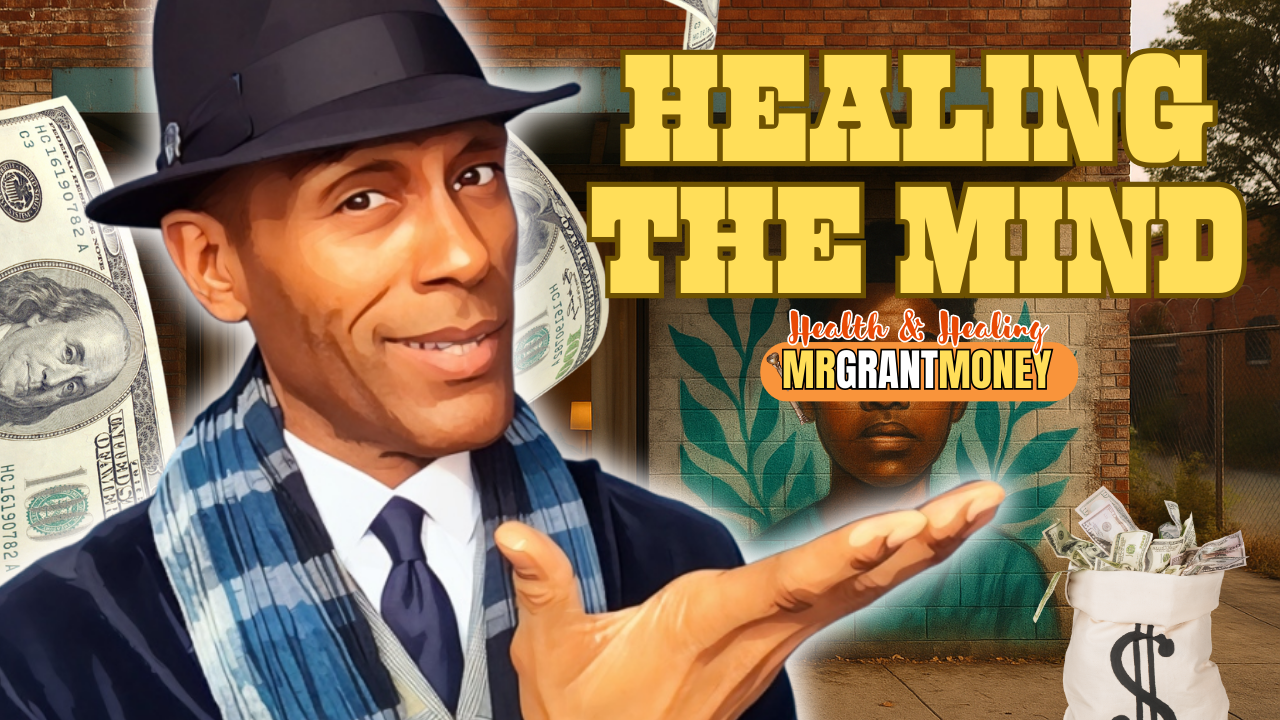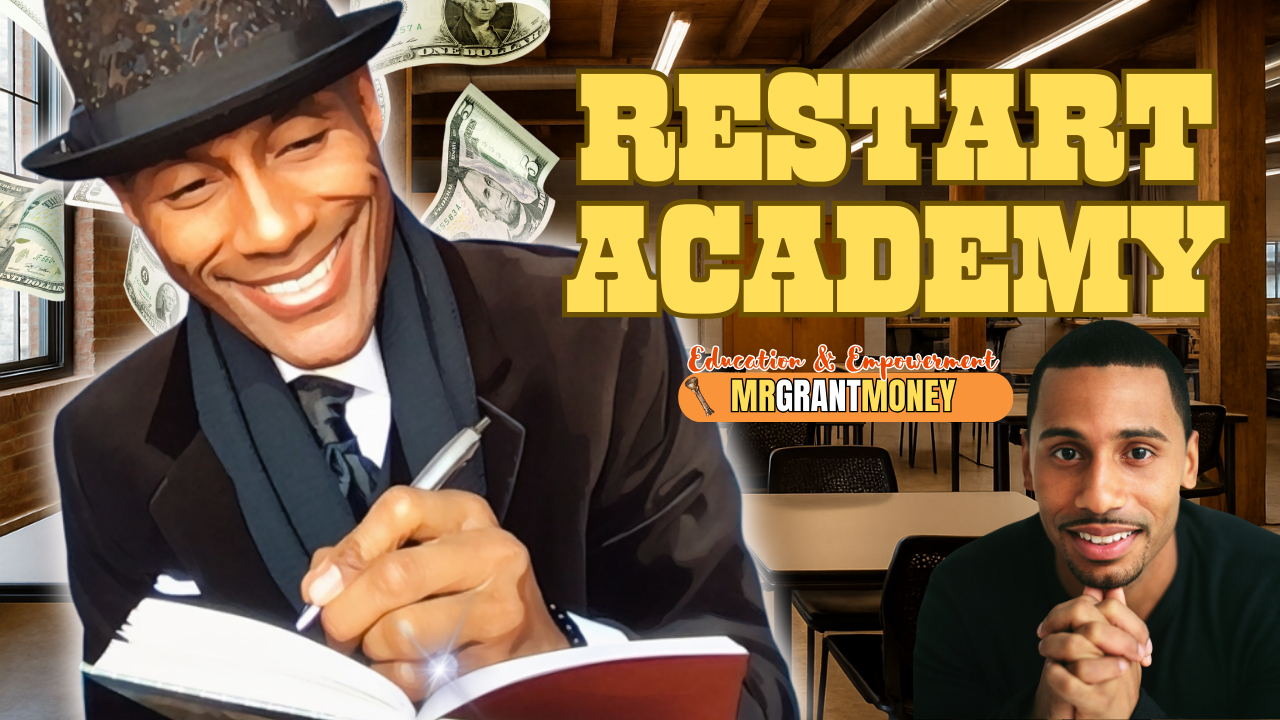The Social Change Grant: Mr. Grant Money & The Teacher Changing Lives

 How One Educator’s Vision Turned a Broken System into a Tech-Powered Movement for Equity
How One Educator’s Vision Turned a Broken System into a Tech-Powered Movement for Equity
The Promise That Fell Flat
"Education is the great equalizer."
It sounds noble. But in Ms. Carter’s 10th grade classroom on Detroit’s east side, it felt like a cruel joke.
Her students were bright—restless, creative, filled with potential—but the playing field was anything but equal. The school’s Wi-Fi cut out twice a day. The laptops were hand-me-downs from a charter school that closed. The “tech curriculum” was built around software no one used anymore.
And the broader system? It ran on testing scores and underfunded mandates. Nothing about it felt built for innovation—let alone for students like hers.
Dreaming Past the Limits
Still, she stayed. She pushed. She improvised lesson plans using YouTube tutorials and old Raspberry Pi`s. And when her students asked the kinds of questions that didn’t have textbook answers, she started dreaming up something bigger.
A tech-powered classroom. Not just a place to “catch up” but a launchpad where her students could build their own tools, tell their own stories, and code their way into futures no one expected them to reach.
She called it The Future Lab.
At first, it existed only in her notebook—half lesson plan, half rebellion.
Rejections, Red Tape, and the Wall
Ms. Carter applied for funding wherever she could. District innovation grants. A local tech foundation. A small neighborhood microgrant.
She got rejections that felt polite but hollow:
-
"Not aligned with current funding priorities."
-
"Try again next cycle."
-
"Too ambitious given current infrastructure."
Worse were the meetings. The ones where well-meaning officials nodded along and asked her to “simplify the model.” Translation: scale down your vision to match what’s already broken.
She was ready to shelve the dream. Until someone at a local education equity panel leaned in and whispered, “You should talk to Mr. Grant Money.”
The Man in the Suit Who Meant Business
She looked up. “Is that...a real person?”
“Oh, he’s real,” they said. “And if he believes in your idea, he doesn’t just help. He delivers.”
They met the next Friday in downtown Detroit, in a corner suite overlooking Campus Martius. He stood when she walked in—navy suit, crisp white shirt, pocket square folded sharp enough to cut glass.
“Ms. Carter,” he said, extending a hand. “Heard you’ve got a classroom full of geniuses waiting on the right kind of power.”
She hesitated. “They don’t need charity. They need infrastructure.”
A smile.
“Then we speak the same language.”
The Blueprint: Real Capital for Real Change
He gestured to a seat, opened a leather folder, and laid out the kind of plan no district meeting had ever offered her:
-
The Social Change Innovation Fund — a $75,000 national education grant for programs merging tech and equity in public schools.
-
A matching commitment from a private foundation focused on digital access in low-income communities.
-
A Michigan state-level innovation pilot that would give The Future Lab not just money—but legitimacy, visibility, and a shot at long-term adoption across the district.
“All together,” he said, “this gets you $180,000 and proof of concept. You’ll need to prep fast. But you won’t do it alone.”
“Why me?” she asked.
“Because you’re not asking for permission. You’re building solutions. That’s who the money’s meant for.”
What Funders Actually Look For
Mr. Grant Money didn’t just hand her a checklist. He walked her through it.
They aligned her vision with funder language: digital equity, community-rooted learning, career-connected education. They outlined outcomes that went beyond test scores—student engagement metrics, project-based learning deliverables, real-world tech exposure.
They attached student testimonials and neighborhood data to show the systemic impact of The Future Lab beyond the school walls.
And most importantly, they made sure the grant narrative wasn’t just compelling—it was fundable.
The Launch of The Future Lab
By the end of the month, The Future Lab was real.
New laptops. Modular furniture. Industry-grade software. Her students weren’t just learning about technology—they were using it to build solutions for their own community.
They designed apps to help neighbors navigate city services. Built websites for local businesses. Created digital documentaries about food access, policing, and public transit.
And for the first time, the classroom felt like it belonged to the future—not a past they’d been forced to accept.
A Shift in the System
The results went beyond the lab:
-
Student attendance rose.
-
Behavioral referrals dropped.
-
Local tech professionals started volunteering.
-
A neighboring school requested help replicating the model.
And Ms. Carter? She’s still in the classroom—only now, her dream isn’t scribbled in a notebook. It’s a blueprint being shared across the city.
Not Just a Grant—A Signal
Mr. Grant Money didn’t just fund a program. He shifted a narrative.
He showed what’s possible when you match vision with strategy, purpose with power.
Because education can be the great equalizer—
But only when someone walks in wearing a suit and knows exactly where the money lives.
Discussion & Personal Reflection Questions
-
What made Mr. Grant Money different from traditional investors or donors—and why was that important for Tunde and Ms. Carter?
-
Both stories show brilliant ideas that almost failed because of lack of access. What does this say about who usually gets funded—and who doesn’t?
-
Tunde’s and Ms. Carter’s solutions weren’t “commercial” in the usual sense. How can young innovators position impact-driven projects to attract non-traditional funding?
-
Mr. Grant Money talks about global and public funding sources—grants, fellowships, challenges. Why don’t more young or grassroots changemakers know about these options? How can that change?
-
What do these stories teach us about the power of one connector, one opportunity, or one grant to unlock big change? How can we create more “Mr. Grant Money moments” for others?
More Resources & Related Topics:
📌 Explore more success stories 📌 Learn about grant acquisition 📌 Discover financial literacy resources 📌 Check out youth entrepreneurship 📌 Browse scholarship opportunities
🔓 UNLOCK EXCLUSIVE TIPS WITH MR. GRANT MONEY!
We hate SPAM. We will never sell your information, for any reason.
















